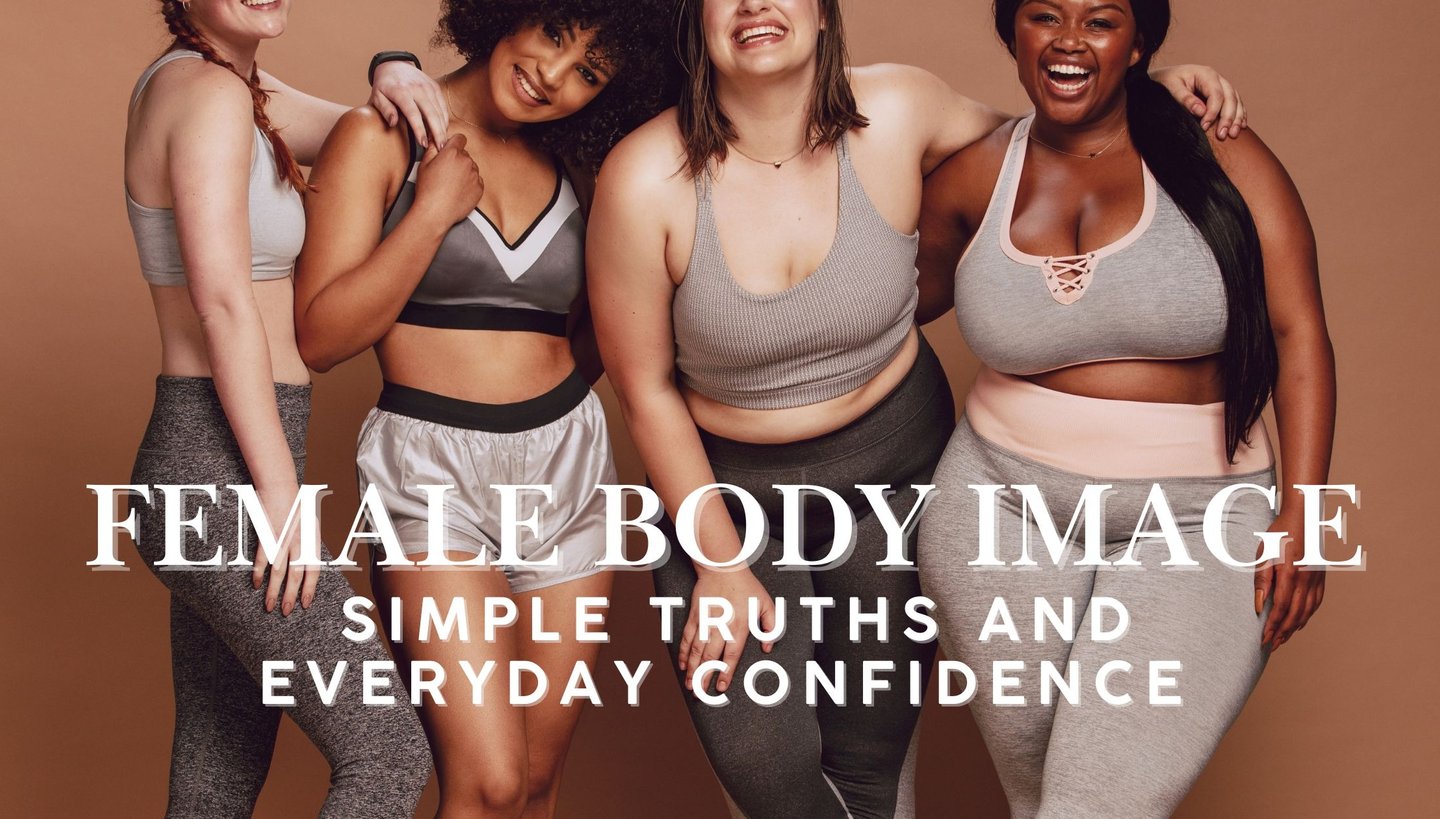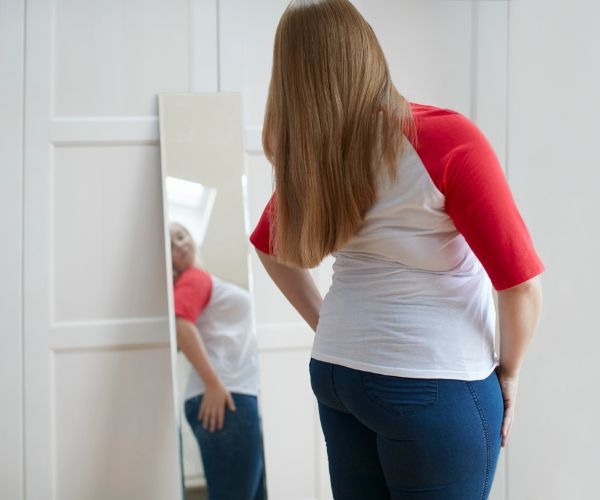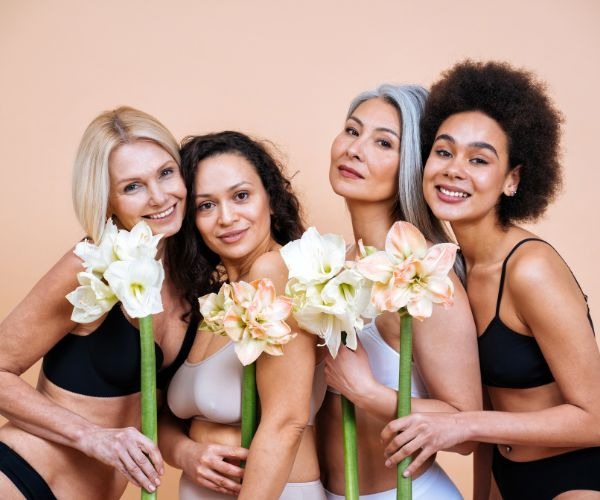Female Body Image: Simple Truths and Everyday Confidence
Get real guidance on Female Body Image, with simple truths, body-neutral tips, and daily wins. Feel calmer, kinder, and more confident in your skin.
SELF CARE AND PERSONAL GROWTH
Shari Smith
11/3/20257 min read
As an Amazon affiliate, we earn commissions at no extra cost to you if you click our links and make a purchase.


Ever feel like your feed is telling you how to look before you even have coffee?
Body image gets shaped by quick scrolls, offhand comments, and old beliefs, and it can weigh on how we feel day to day.
This topic sits at the heart of mental health and confidence. When your body feels like a problem to fix, it steals time, energy, and joy.
When you learn a kinder view, you move with more ease, show up more fully, and boost your self-esteem.
Here, we will unpack what female body image actually means to many women, where common struggles start, and how to spot the sneaky messages that chip at self-worth.
You will get simple, real-world steps you can use right away, like reframing self-talk, curating your feed, and setting boundaries around appearance talk.
You are not alone, and you are not the problem. With a few steady shifts, you can build a healthier view that supports your goals, your style, and your daily peace.
Take a breath, get comfortable, and let’s keep this honest and doable. You deserve a body story that feels like home.
If you want a quick boost before we start, this short interview is a helpful watch.

4 Steps to Improve your Body Image: How to Stop Hating Your Body - Interview with Amy Harman, CEDS
Watch Video
What Shapes Female Body Image Today?
Female body image gets shaped by what we see, hear, and repeat. It is a mix of social feeds, ads, family stories, and personal wins or hurts. When these stack up, they can set standards no one can keep.
Awareness is the first step to a kinder, steadier view.
The Role of Social Media in Body Perceptions
Instagram, TikTok, and similar platforms run on pictures and quick hits of praise. Many media images are edited, filtered, or posed under perfect light.
That can trick the brain into thinking those bodies are the norm. Research across social platforms shows that frequent exposure to the thin ideal in media images is linked to higher body dissatisfaction in young girls.
The bar keeps moving, so confidence keeps slipping.
Try these simple checks as you scroll:
Spot edits: Look for warped lines, blurred skin, or identical backgrounds. These signal heavy retouching.
Reality check: Remind yourself that posing, angles, and lighting can change a body shape in seconds.
Compare less: If an account triggers body comparison or self-criticism, mute it for a month and notice the shift—social comparison like this often hits young girls hardest.
Curate your feed: Follow accounts that show range and honesty. Good places to start include @thebirdspapaya, @bodyposipanda, @iamiskra, and @nalgonapositivitypride.
Think of your feed as a mirror you get to adjust. When it reflects diversity and real life, female body image softens. This sets you up to look at other influences with more calm and choice.
Societal and Cultural Pressures on Women
Unrealistic standards of beauty from ads, movies, and TV often push one narrow script: an ideal appearance of thinness yet toned, youthful, smooth, and small in certain places but full in others—sometimes driving pursuits like cosmetic surgery to chase the thin ideal.
Family or community comments can echo it, like casual fat talk about weight after holidays or praise that only celebrates shrinking, which fuels more fat talk in everyday conversations.
These messages teach that beauty equals worth, leading to self-objectification and body dissatisfaction, which can squeeze confidence and raise anxiety.
Beauty ideals are not universal. Cultural beauty ideals vary widely. In some cultures, softness signals health and status. In others, athletic builds are praised.
Body shape preferences also shift across time. What trends in one era or region can flip in another. Seeing this big picture helps you see ideals for what they are, not facts.
Small shifts help:
Name the script: When you notice a narrow ideal, say it out loud.
Add variety: Seek films, brands, and creators that show many sizes, ages, and abilities.
Set language boundaries: Ask loved ones to skip body talk and support healthful habits instead.
Overcoming Negative Body Image Challenges in Women
Negative thoughts about your body can creep in quietly.
They often show up in small habits, then grow into body image disturbance and daily stress.
Naming what is happening gives you room to choose a kinder path.
With steady practice, body image can shift from harsh to helpful for women.
Signs of Poor Body Image and When to Seek Help
Notice patterns without judgment.
Small flags can tell you it is time to get support and breathe a little easier, especially for girls navigating weight stigma tied to fears of overweight or obesity, which can intensify anxiety and poor body image.
Mirror avoidance: For young girls, dodging reflections or covering cameras to avoid seeing their bodies.
Body checking: Young girls pinching, measuring, or weighing many times a day, often fueled by a drive for thinness.
Extreme dieting: Girls cutting whole food groups without medical advice, driven by an intense drive for thinness and obsession with thinness.
Exercise as punishment: Working out to erase meals or guilt, sometimes as a form of restrictive dieting to chase thinness.
Comparison traps: Scrolling and leaving every app feeling less than, amplified by societal pressures around weight.
Social skip: Turning down events because of how you look, particularly when weight stigma around overweight or obesity leads to isolation.
Clothes as tests: Keeping “goal jeans” based on weight or size or wearing painful sizes.
Mood tied to numbers: A scale reading decides your day.
Food rules and secrecy: Rigid tracking, secretive dieting, or eating alone to hide habits that stem from dieting extremes.
Harsh self-talk: Saying things to yourself you would never say to a friend.
A gentle next step helps: talk to someone you trust, text a friend, or mention it to your primary care provider.
If eating feels out of control or you feel stuck in cycles, a licensed therapist or dietitian can help—especially if symptoms point to eating disorders or body dysmorphic disorder.
The National Eating Disorders Association notes that millions of women will face an eating disorder, and early support improves recovery.
Visit NEDA for current resources and guidance.
The Link Between Body Image and Mental Health
Body thoughts and mood often travel together. Think of it like a snowball rolling downhill. One tough thought picks up speed, more harsh ideas stick to it, and soon it feels heavy.
Over time, this can feed anxiety and depression, drain focus, and dim joy.
Mindfulness offers a small shovel to stop that snowball. Try a 60 second reset: place your feet on the floor, take three slow breaths, and name three sensations you feel.
You interrupt the spiral, even a little. Pair this with a simple thought swap, like “My body is an instrument, not an ornament.” These tiny pauses set the stage for practical solutions that build lasting confidence.
Practical Ways to Foster Positive Female Body Image
Small daily choices can shift how you see your body. Think of it like tending a garden.
You water what you want to grow, and you gently pull the weeds that choke confidence.
These ideas are simple, steady, and grounded in what helps most women feel well, promoting a healthy body image over time.
Daily Habits for Self-Acceptance
Start with a short morning check-in. Two minutes is enough.
Affirmations that feel true: Try “I treat my body with care,” “Strength over weight or size,” or “My worth is not a number.” Say them out loud while brushing your teeth.
Thought swap, a CBT staple: Catch an unhelpful thought, write it down, then write a kinder, more factual one. Example: “My stomach looks wrong” becomes “My stomach shows life and movement, and I deserve comfort.”
Gratitude journaling for body appreciation: List three body thanks each day. “I walked my dog,” “I digested dinner,” “I hugged my kid.”
Balanced movement: Choose what feels good, not punishing. Rotate walking, yoga, strength, dance. Aim for joy and energy, not calorie math.
Media detox: Set a 15 minute limit on apps that fuel social comparison and body comparison. Mute or unfollow accounts that spike shame from social comparison. Follow creators who show range, like athletes in larger bodies, moms with stretch marks, women with disabilities, women with scars, women navigating aging, women in menopause, and women who use mobility aids.
Wardrobe kindness: Wear clothes that fit your current weight or size. Comfort signals safety to the brain and supports better choices.
Remember, female body image improves when all bodies are honored. Curly hair, flat chests, big thighs, soft bellies, prosthetics, postpartum lines, and dark skin with vitiligo all belong.
Building a Supportive Community Around Body Positivity
You do not have to do this alone. Look for spaces that value honesty over perfection.
Join real-body groups: Local walking clubs, size-inclusive gyms, or online forums with clear rules against diet talk.
Screen for red flags: Extreme before-and-afters, “what I eat in a day” posts that push restriction, or comments policing bodies through body comparison.
Share your story: Post or tell a friend what is helping. Naming the hard parts normalizes varied experiences and reduces shame.
Find a buddy: Swap weekly check-ins. Celebrate non-scale wins, like better sleep or steady mood.
Use expert tools together: Try a shared “thought log” for reframes, then compare notes.
Keep it gentle and consistent. Small shifts stack up, and your confidence grows with them. You are building a kinder way to live in your body, one day at a time.
Conclusion
Body image shifts when we bring awareness, choose kinder inputs, and practice steady habits. You learned how feeds, unrealistic standards of beauty in culture, and self-talk shape confidence, and how small moves add up.
This brings us back to that morning scroll before coffee, where a single choice can set the tone for your day.
Start today with one simple step. Mute a comparison-heavy account, wear the comfortable outfit that fits now, or try the 60 second reset. Keep the thought swap nearby, and speak to yourself like a friend.
These tiny acts protect mental health, free up energy, and help body image feel less heavy and more honest.
Your worth is not tied to size, shape, or smoothness. It lives in your voice, your care, your strength, and your joy. If this spoke to you, share it with someone who needs a gentler view, then tell me what you will try first.
Thank you for reading and for choosing a body story that feels like home.












